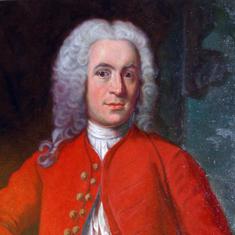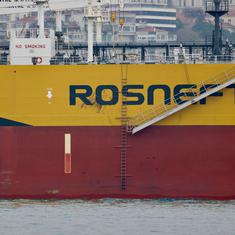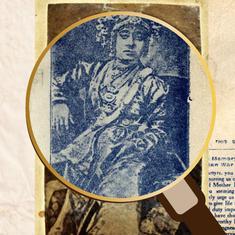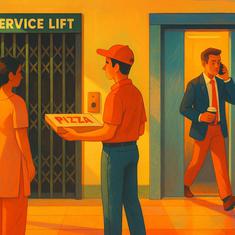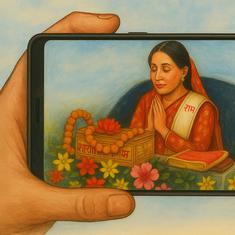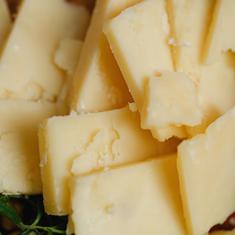Jawaharlal Nehru was a rangy 15-year-old when he was sent to England to study at Harrow, the prestigious school in London that has produced artists, prime ministers and Nobel winners. It was a formative time for him. From Harrow he went on to study at Cambridge University and the Inner Temple, one of London’s four Inns of Court. By 1911 though, he was tired of the city. “I have not been out of London since Xmas last and am sick unto death of it,” he wrote to his father, while studying for the Bar. “I would go away for good very soon but something or other keeps me here and I have to stay.”
Like Nehru, London had a hold on many Indians, who had been travelling to Britain in increasing numbers from the mid-19th century. Many of them came as students seeking professional degrees in law and medicine, or to prepare for the Indian Civil Service examinations. Others came for work or trade, like Dadabhai Naoroji, who established a branch of Cama & Co. in Liverpool in 1855 and opened his own cotton trading company in 1859. Many came and stayed on.
As time passed, Indian migrants began playing a significant role in the making of Britain. Cornelia Sorabji, a Parsi from Deolali, became the first woman to study law at Oxford in the early 1890s. Sophia Duleep Singh, the daughter of Maharaja Duleep Singh, became a prominent figure in the suffragette movement. Frederick Akbar Mahomed, the grandson of Bengali entrepreneur Sake Dean Mahomed, made foundational contributions to modern medicine in late 19th century.
Around this time, Britain was temporary home to many leaders of India’s freedom struggle – besides Nehru, Sri Aurobindo, Bal Gangadhar Tilak, Sardar Vallabhbhai Patel, among others, spent time in London. Since the 1860s, London has honoured some of these notable residents by affixing circular blue plaques on their former homes. These plaques, usually on the outside wall near the entrance, briefly describe the historical significance of the former inhabitants and their years of residence. Mahatma Gandhi was the first Indian to be bestowed this honour, when the first of his two plaques was put up at his house in Bromley by Bow. Since then, a number of Indian nationalist figures have received a similar honour.
Raja Ram Mohan Roy

In 1830 or 1831, Mughal emperor Akbar Shah II sent Raja Ram Mohan Roy as his ambassador to the King of England. The famous reformer, often called the father of the Bengal Renaissance, lived in the Bloomsbury neighbourhood of the London Borough of Camden. During the course of his official work in the city, he came into contact with a number of philosophers, such as James Mill and Jeremy Bentham. Roy died in Bristol in 1833 and was buried in the Arnos Vale Cemetery.
Sir Syed Ahmad Khan

One of the early Indian residents of London was the noted reformer Sir Syed Ahmad Khan. Khan corresponded with colleagues and newspapers in India from his house in Bloomsbury, where he lived from 1869 to 1870. Khan, who would go on to establish the Muhammadan Anglo-Oriental College (which later became the Aligarh Muslim University) in 1875, was a great admirer of London. As mentioned in Jacqueline Suthren Hirst and John Zavos’ book Religious Traditions in Modern South Asia, Khan wrote in 1869: “Although I do not absolve the English in India of discourtesy…all good things, spiritual and worldly, which should be found in man, have been bestowed by the Almighty…on England.”
Sri Aurobindo

A newer plaque, unveiled in 2007, commemorated the nationalist guru Sri Aurobindo’s residence in the basement of 49 St Stephen’s Avenue in Shepherd’s Bush. Aurobindo had arrived in England with his family in 1879. He lived in the Shepherd’s Bush residence as a young teenager with his two brothers from 1884 to 1887, while he attended St Paul’s School in the Barnes district of Richmond upon Thames. After his father fell into “some financial straits”, they were forced to move into the building that housed the Liberal Club in South Kensington, recounts Peter Heehs in his book The Lives of Sri Aurobindo. Aurobindo’s “only food” during the year that followed was “...a slice or two of sandwich bread and butter and a cup of tea in the morning and in the evening a penny saveloy.” He eventually left England in 1893.
Mohandas Karamchand Gandhi

Mohandas Karamchand Gandhi arrived in London from Gujarat as an 18-year-old, and was called to the Bar at the Inner Temple on June 10, 1891. During the time of his study, he stayed at No 20 Baron’s Court Road in the Metropolitan Borough of Hammersmith, where he paid 30 shillings a week for room and board. In London, Gandhi met the theosophists Helena Blavatsky and Annie Besant, who went on to play a key role in influencing his religious thought. Besant later joined the Indian National Congress, and supported the Home Rule Movement.
Vinayak Damodar Savarkar

While Vinayak Damodar Savarkar’s is the only name that adorns the house at 65 Cromwell Avenue in Highgate, the “India House”, as it was called from 1905 to 1910, was frequented by a number of Indian radicals, including Virendranath Chattopadhyay, Lala Har Dayal and Madan Lal Dhingra, who assassinated Sir William Hutt Curzon Wyllie. Savarkar, today a Hindutva icon, lived at the India House while studying law at Gray’s Inn from 1906 to 1909. Shyamji Krishna Varma, a lawyer who had studied at Oxford and been called to the bar at Inner Temple, set up the house as a residence for Indian students in Britain. In addition to establishing the India House and the Indian Home Rule Society in London, Varma also edited an early anti-colonial publication called The Indian Sociologist. In 2010, Narendra Modi, who was the chief minister of Gujarat at the time, unveiled a replica of the Highgate house in the town of Mandvi in Kutch, which was Varma’s birthplace.
Jawaharlal Nehru

Jawaharlal Nehru lived in an apartment at 60 Elgin Crescent in Notting Hill, Kensington, in 1910 and 1912 while he studied law at the Inner Temple. He also briefly stayed at 38 Gloucester Terrace near Hyde Park in 1911. While in London, his spending habits caused his father a considerable amount of consternation – in a letter of apology, the younger Nehru wrote, “I am fully aware of the fact that I have lately spent far too much money and have not given the attention to my studies which I should or might have given...I have got to know some people who could afford to spend much more than I could, with the result that I too occasionally was rash enough to go beyond my limit.” He was called to the Bar in 1912, but was never overly fond of lawyers or his legal training. As documented in the Inner Temple Library Newsletter, he later wrote: “Law studies did not take up too much time and I got through the Bar examinations, one after the other, with neither glory nor ignominy.”
Rabindranath Tagore

Rabindranath Tagore stayed at a house in the Vale of Health, Hampstead, in 1912, while working on the English translation of his collection of poems, Gitanjali, which was published by the Indian Society of London in November of that year. While in London, Tagore mingled with the literary luminaries of the time, including Sir William Rothenstein, Evelyn Underhill and WB Yeats. In 1913, Tagore was awarded the Nobel Prize for Literature, in large measure due to his work Gitanjali.
Sardar Vallabhbhai Patel

The memorialisation of Sardar Vallabhbhai Patel has been the subject of controversy in recent times, following the unveiling of the massive Statue of Unity in the statesman’s home state of Gujarat in November 2018. A smaller memorial – the blue plaque – commemorates his residence in Ladbroke Grove. Patel came to London at the age of 36 to pursue law at the Middle Temple, and lived in the house from 1912 to 1914.
Bal Gangadhar Tilak

Bal Gangadhar Tilak is perhaps best known for his early support of the Swadeshi movement during India’s freedom struggle, as well as his three sedition trials in 1897, 1909 and 1916. He lived at 10 Howley Place in Paddington from 1918 to 1919, while fighting a libel suit against the foreign editor of The Times, Sir Valentine Chirol. According to the authors of London Plaques, Derek Sumeray and John Sheppard, Chirol “had made defamatory comments about him in a book, Indian Unrest... Tilak lost the case, the judge saying in his summing up: ‘a man twice convicted of sedition has no character to lose.’”
Bhimrao Ramji Ambedkar

Ambedkar’s residence at No 10, King Henry’s Road, in London’s Chalk Farm neighbourhood was bought by the government of Maharashtra in 2015 for £3.1 million and reopened after refurbishment, in April 2018. Ambedkar lived in the house from 1921 to 1922, while simultaneously studying for the Bar at Gray’s Inn, and for a doctorate at the London School of Economics.



